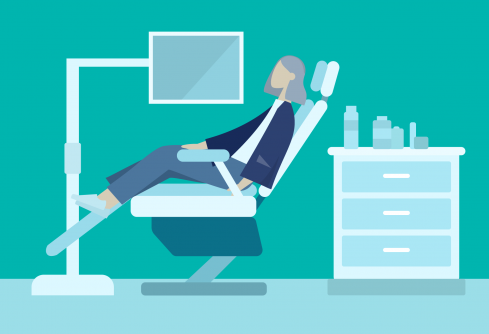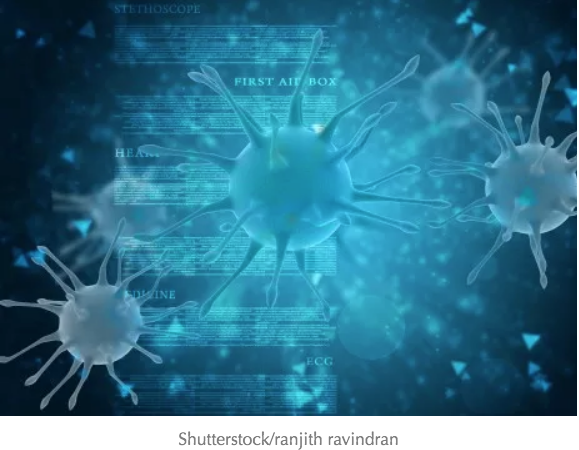A $31.4 million federal grant will allow a regenerative medicine resource center led by the School of Dentistry to continue its important research into the restoration of dental, oral and craniofacial tissues lost to disease, injury or congenital disorders.
The five-year grant from the National Institute of Dental and Craniofacial Research is the largest research award ever received by the school. It extends funding for the Michigan-Pittsburgh-Wyss Regenerative Medicine Resource Center, which was established in 2017 with an $11.7 million startup grant, also from NIDCR.
The resource center’s leadership team includes researchers from the University of Michigan, University of Pittsburgh and the Wyss Institute at Harvard University.
It includes U-M collaborators from the Medical School, School of Public Health, College of Pharmacy, College of Engineering, the Office of Technology Transfer and the Michigan Institute for Clinical and Health Research, as well as contributors from private companies across the country.
In its first three years, the center has brought together a multidisciplinary team of scientists, engineers, clinicians, and regulatory and technology commercialization experts who evaluate regenerative medicine projects submitted by academic, for-profit and non-profit researchers.
Regenerative medicine investigates how to regenerate damaged cells, tissues or organs to their full function, such as finding ways for the body to heal wounds faster or to repair bone that has been damaged. Research strategies often integrate engineering and biology, and can incorporate biomaterials, biologics and drug delivery, cellular therapies, medical devices or combinations of those.
The Michigan-Pittsburgh-Wyss Center currently funds 13 interdisciplinary translational projects. It contributes scientific expertise and also helps guide the researchers and their new technologies through steps such as Food and Drug Administration requirements, pre-clinical studies, market analyses and commercialization strategies.
The new grant will help advance the projects to the point where investigators receive FDA approval to begin clinical trials in patients for their new products and-or procedures, with the ultimate goal being their widespread use in the treatment of patients.
David Kohn, professor of dentistry and lead principal investigator for the resource center, said the new grant allows the center to expand on its early successes involving a wide variety of research projects.
“We are excited to advance to the next stage of this unique program and pleased that the NIDCR has the confidence in us to invest further in this initiative,” said Kohn, who also is a professor of biomedical engineering in the College of Engineering and Medical School. “It allows us to use the structure and processes we have developed so far to guide the projects to successful translation for patients and-or commercialization.
“We have nurtured projects related to many areas of critical need in the dental, oral and craniofacial space, and have helped many projects advance along the translational pipeline, which is complex, time-consuming and costly.”
Dentistry Dean Laurie McCauley said the new grant from the NIDCR, part of the National Institutes of Health, is a significant milestone in the School of Dentistry’s longstanding commitment to scientific research. She noted that the school has been a national and world leader in dental and craniofacial research, dating to its early days after being founded in 1875.
“We are pleased to partner with the NIDCR and the other universities in this robust and ground-breaking project,” McCauley said. “To be leading this multidisciplinary group engaged in the latest regenerative medicine research is a testament to the quality of our faculty and researchers. It illustrates our commitment to advance and lead transformative science.”
Kohn said 90 percent of projects in the research center’s portfolio have been issued a patent or have a pending patent application; 80 percent have had submissions to the FDA in efforts toward clinical clearance or approval; and 100 percent have corporate engagement.
Several new companies have been formed, others have received equity financing, some have advanced to clinical trials on sister technologies, and yet others have received add-on funding.
“The impact of these efforts will be a catalysis of translation never previously achieved in an NIH extramural program, resulting in the transformation of dental, oral and craniofacial medicine,” Kohn said.
The projects funded so far by the research center include many types of oral and craniofacial research. One is centered on a patented bone adhesive designed to aid in the treatment of fractured bone and to more efficiently stabilize dental implants. Another is pursuing gene therapy to provide relief from dry mouth in patients whose salivary function has been damaged by radiotherapy for head and neck cancers.
William Giannobile, co-principal investigator and William K. and Mary Anne Najjar Professor of Dentistry, said this initiative is the first of its kind to aim to truly transform dental regenerative medicine to advance patient care.
“There have been many unsuccessful attempts of industry bringing regenerative technologies to advance clinical care, but this partnership offers a novel structure to leverage synergies between industry and academic scientists to realize clinical adoption,” said Giannobile, chair of the Department of Periodontics and Oral Medicine and a professor of biomedical engineering.
Other principal investigators with Kohn and Giannobile are:
• Charles Sfeir, associate dean for research and the director of the Center for Craniofacial Regeneration at the University of Pittsburgh.
• William Wagner, director of the McGowan Institute for Regenerative Medicine and a professor of surgery, bioengineering and chemical engineering at the University of Pittsburgh.
• David Mooney, professor of bioengineering at Harvard University and core faculty member at the Wyss Institute.
Mutsumi Yoshida, managing director of the center’s U-M site at the dental school, coordinates program needs with Patrick Cantini, a program administrator at the University of Pittsburgh’s McGowan Institute.
The Michigan-Pittsburgh-Wyss Regenerative Medicine Resource Center is one of the two national Resource Centers established by the NIDCR in 2017 through its Dental Oral and Craniofacial Tissue Regeneration Consortium initiative. The other is the Center for Dental, Oral and Craniofacial Tissue and Organ Regeneration, a collaboration among several universities in California.






 As dentists and their teams across America get back to their regular schedules after a sharp COVID-19-related reduction, a new study shows a key opportunity to reduce the use of opioid painkillers by their patients.
As dentists and their teams across America get back to their regular schedules after a sharp COVID-19-related reduction, a new study shows a key opportunity to reduce the use of opioid painkillers by their patients.

 Next-gen nano technologies that can prevent infection and diagnose disease are set to transform the medical industry as this important
Next-gen nano technologies that can prevent infection and diagnose disease are set to transform the medical industry as this important 

